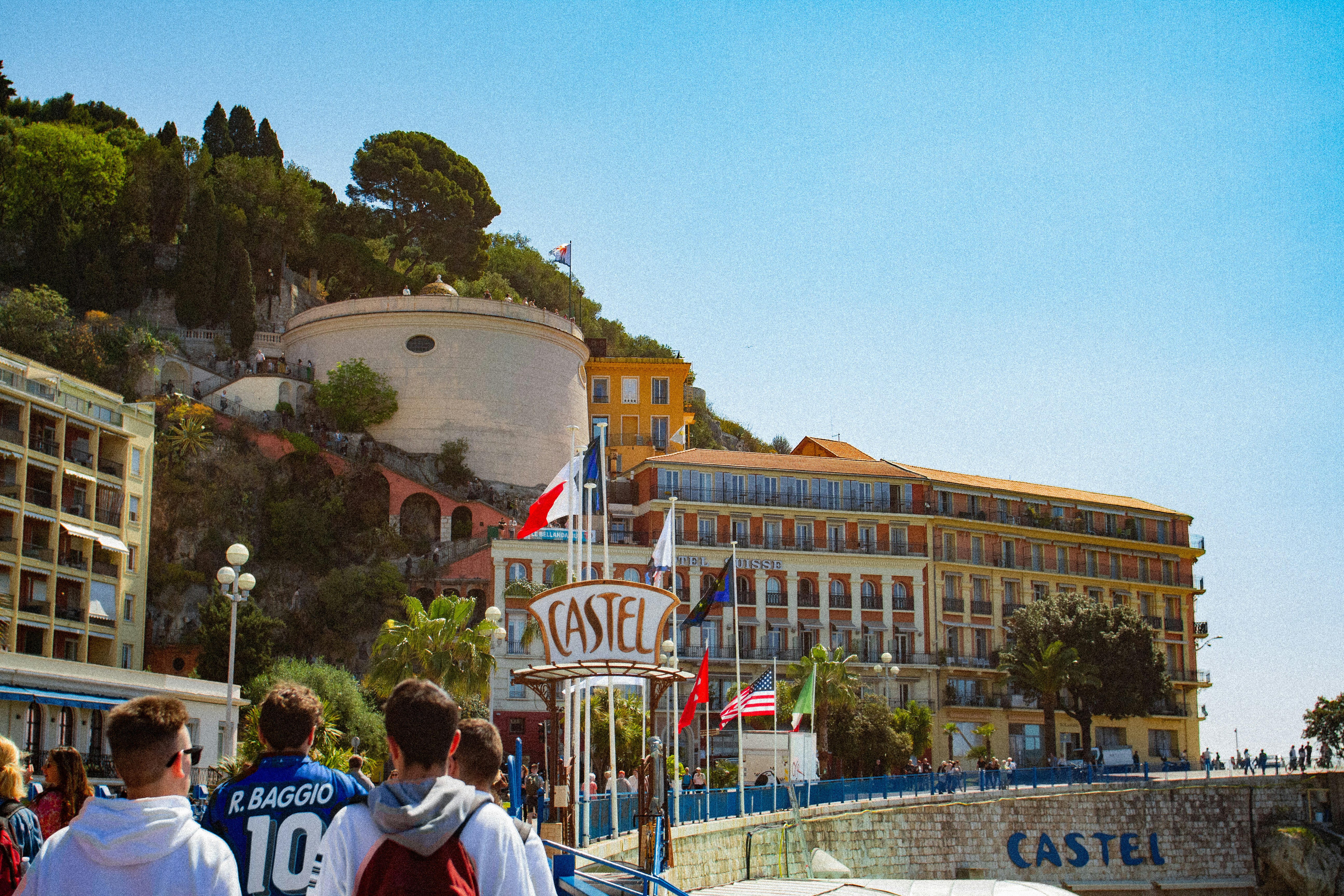
The Allure of Scenic Beauty
The Isle of Wight is renowned for its breathtaking landscapes and remarkable natural beauty, captivating visitors from across the globe. This stunning island features a diverse array of scenic vistas that evoke a profound sense of peace and tranquility, attracting nature lovers and photographers alike. One of the iconic landmarks that exemplify this grandeur is the Needles, a series of striking chalk formations that jut majestically into the Solent. These impressive geological structures, with their unique shapes and contrasting colors against the azure sea, provide a striking visual experience, often becoming the focal point of many photographs taken on the island.
Furthermore, the island boasts some of the most beautiful beaches in the United Kingdom, each offering its own charm. Compton Beach, with its golden sands and rugged cliffs, provides a serene environment for relaxation or exploration. Visitors can engage in leisurely walks along the shoreline or relish the breathtaking views of the cliffs. Similarly, Sandown and Shanklin beaches are characterized by their family-friendly atmospheres, offering numerous recreational activities while surrounded by stunning natural beauty. The soft sands and gentle waves make these locations perfect for both relaxation and adventure.
In addition to its beaches, the Isle of Wight features an extensive network of picturesque coastal paths that showcase the island’s serene landscapes. Walking along these trails offers breathtaking views of the surrounding countryside and coastline, allowing visitors to immerse themselves in the island’s natural resources. As one traverses these paths, the idyllic scenery is complemented by the sounds of the waves crashing on the shore and the gentle rustle of the wind through the trees. Those seeking a respite from the hustle and bustle of everyday life will undoubtedly find solace in the stunning beauty of the Isle of Wight.
Rich History and Culture
The Isle of Wight is steeped in a rich historical tapestry that presents an intriguing narrative for both history buffs and casual visitors alike. The island’s Victorian architecture stands as a testament to its prosperous past, with intricate designs and grand structures dotting its landscape. Notable examples include the Royal Yacht Squadron’s clubhouse in Cowes, which is an iconic symbol of its illustrious maritime history. This historical significance is deeply intertwined with the royal connections the island boasts, hosting various members of the British royal family over the decades. Queen Victoria, in particular, played a pivotal role in the island’s identity after purchasing Osborne House, which served as her summer retreat, further cementing the Isle of Wight as a favored destination for the upper echelons of society.
Moreover, the island has been the backdrop for significant historical events that shaped the course of British history. From the early Roman settlements and medieval castles to its strategic naval importance during the Napoleonic Wars, the Isle of Wight has witnessed numerous chapters that have contributed to its cultural richness. This historical depth is further explored through the numerous museums and heritage sites that encourage visitors to delve into the island’s past.
The vibrant arts scene is another distinctive feature of the Isle of Wight’s culture, conveying its eclectic spirit. The island is home to various annual festivals, such as the Isle of Wight Festival, which celebrates music and artistic expression. Local galleries and craft markets showcase the talents of resident artists, creating a dynamic dialogue between past and present. This flourishing art community, along with historical landmarks, makes the Isle of Wight a cultural gem, enticing visitors to explore and engage with its storied history while fostering appreciation for its ongoing artistic endeavors.
Outdoor Adventures and Activities
The Isle of Wight offers a wealth of outdoor activities that cater to a diverse range of interests and fitness levels, making it a prime destination for active travelers. Nature enthusiasts can explore some of the island’s most scenic hiking trails, such as the coastal path that stretches for nearly 70 miles, offering breathtaking views of the Solent and the English Channel. One particularly popular route is the Tennyson Trail, which takes hikers through stunning landscapes, including the iconic needles.
Cycling is another exhilarating way to experience the Isle of Wight’s beauty. The island boasts designated cycle routes that traverse picturesque countryside and serene coastal areas. Visitors can rent bikes from numerous local shops, ensuring that both seasoned cyclists and beginners can find a suitable ride. The routes vary in difficulty, allowing for leisurely rides through places like Parkhurst Forest or more challenging terrain around the rugged coastline.
For those who seek adventure on the water, the Isle of Wight is a haven for water sports enthusiasts. Sailing, kayaking, and paddleboarding are popular choices, with several watersports centers offering equipment rental and instruction. The gentle waves along the coastline are ideal for beginners, while experienced sailors can take advantage of the more challenging conditions in the Solent. Furthermore, the island is renowned for its stunning beaches, such as Yaverland and Shanklin, where visitors can relax after a day of adventure.
Additionally, the Isle of Wight is home to several nature reserves and parks, including the famous West Wight and Ventnor Botanic Garden. These locations provide ample opportunities for birdwatching, wildlife photography, and simply appreciating the island’s rich biodiversity. Each outdoor activity allows visitors to immerse themselves in the island’s natural beauty, providing an exhilarating escape from the hustle of daily life.
Local Cuisine and Hospitality
The Isle of Wight offers visitors a unique culinary landscape that distinctly reflects its coastal charm and agricultural richness. The island’s local cuisine predominantly features fresh seafood, benefiting from its surrounding waters. Dishes such as crab, lobster, and locally caught fish are a testimony to the island’s bountiful maritime resources. Many restaurants pride themselves on sourcing their ingredients from nearby waters, ensuring that patrons enjoy the freshest flavors possible. For instance, establishments along the coast often serve specialties like the renowned Wight crab, prepared simply to highlight its natural taste.
In addition to seafood, the Isle of Wight is also known for its locally sourced produce. The island’s fertile land supports a range of fruits and vegetables, which play a vital role in everyday dishes served at local eateries. Seasonal ingredients, such as tomatoes, asparagus, and potatoes, feature prominently in meals, reinforcing the connection between the land and the food served to guests. This focus on local sourcing not only supports the island’s economy but also fosters an appreciation for the region’s agricultural heritage among visitors.
The hospitality of the Isle of Wight complements its culinary offerings. The residents are known for their welcoming nature, which is well-reflected in the charming eateries and accommodations scattered throughout the island. Whether dining in a quaint café or a high-end restaurant, travelers are likely to encounter warm service that enhances their overall experience. Many establishments also emphasize the importance of community, often using family recipes handed down through generations. This personal touch adds to the allure, allowing visitors to enjoy an authentic taste of the Isle of Wight’s culture.


